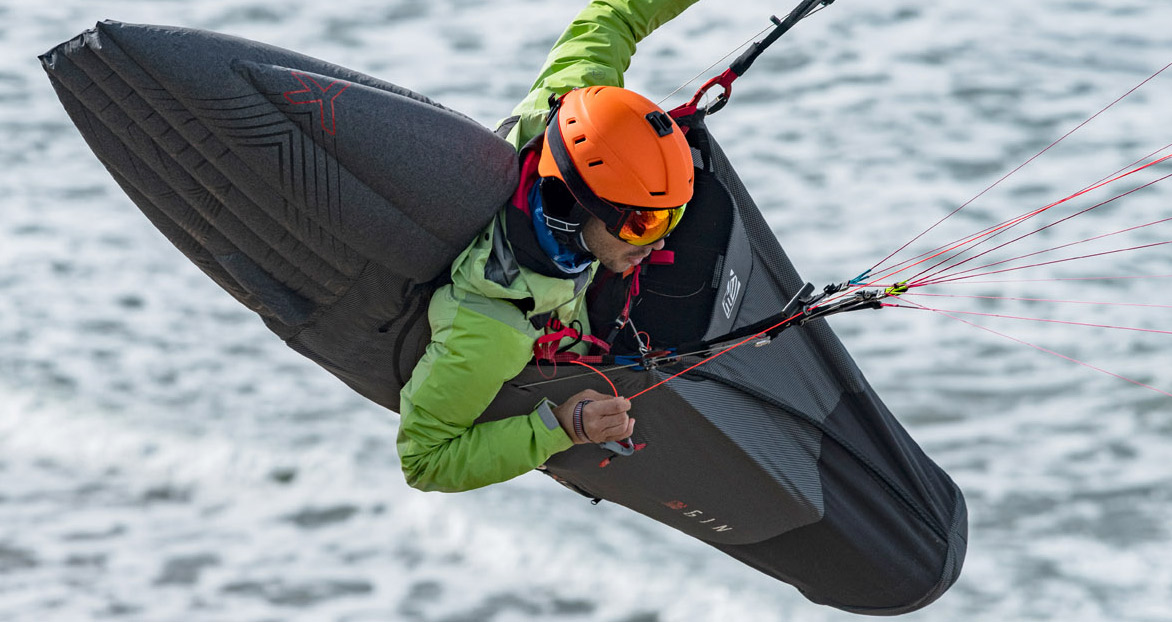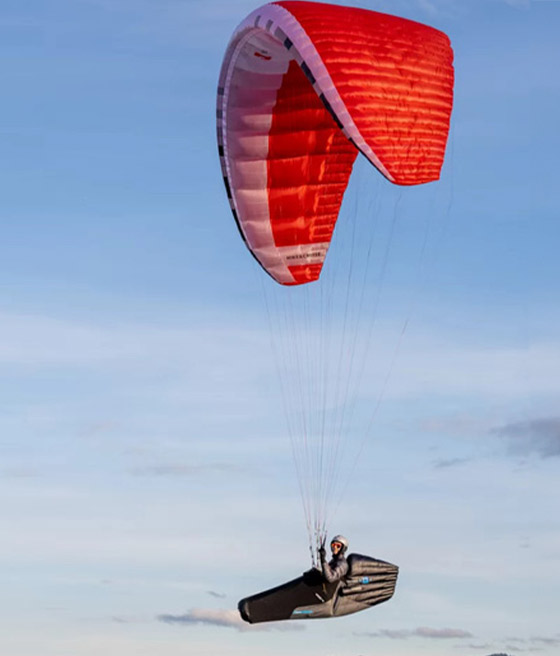How to choose your paragliding harness ?


If you're starting to take an interest in paragliding equipment, you're probably wondering how to choose the right harness for your paraglider. We'll cover a few points to help you understand the basics of harnesses.
CHOOSING YOUR PARAGLIDING HARNESS ACCORDING TO YOUR LEVEL
As a beginner pilot, it's best to opt for harnesses equipped with technologies that provide maximum protection and stability during your free flight. You can choose between harnesses with airbag protection, foam bags (foam absorption systems) or Koroyd protection. All these protections are standardized, and undergo laboratory testing to guarantee PPE conformity. In addition, most harnesses are equipped with an ABS (anti-balancing system) to limit the effects of a poorly negotiated harness support.
Once you've chosen your harness, you'll also need to make the necessary adjustments to ensure comfort and efficiency.
Don't hesitate to ask your instructor for more advice.
As your level evolves, you'll start to consider new harnesses, such as acrobatics or cocoon harnesses, which will enable you to be better adapted to your flying or to competition.
CHOOSING YOUR PARAGLIDING HARNESS BY TYPE OF FLIGHT
As mentioned above, you need to choose your harness according to the way you paraglide. Here are a few examples of paragliding harness families to give you an idea of what's out there :
- Classic flight, thermal splash and small cross-country : the classic seated harness often offers good value for money. Light and reversible models are also available. These harnesses are designed to provide maximum comfort and stability for the pilot during take-off and landing.
- Cross-country flying : cocoon harness, with the same kind of protection you'll find on classic harnesses, but often better equipped in terms of accessories (integrated cockpit, ballast pocket, hole for penilex, etc.). These harnesses are designed not only to improve the aerodynamics of the pilot/harness assembly, but also to ensure optimum comfort for the pilot, who will be flying for several hours in the sky and in the air under a variety of weather and aerological conditions. Among other things, the reclined position allows you to be more comfortable under the wing for the duration of the flight.
- Hike & Fly or Speed Riding : classic string harness or reversible harnesses, even ultra-light thongs, some models with airbag and reserve pockets, others without, with or without reversible bags, the options are many and varied. These harnesses are designed to optimize the weight and volume of the pilot's equipment during Rando and Vol. A reversible harness is one that can turn on itself to become a rucksack. Although comfort in flight remains a primary concern, it is generally accepted that these harnesses, especially on long flights, are far less comfortable than their planchette counterparts. Designed for short to medium-length flights. Ranging from 100 grams for the lightest to 1.5 kilograms for the heaviest, these harnesses are also very compact, but still offer you a safe paragliding flight.

The examples given above are for information only: it's perfectly possible to hike and fly with standard equipment. It's just that it's less suitable than specialized mountain gear. Just as it's possible to complete an 8-hour flight without flying in a cocoon! Above all, don't get bogged down in the idea that for such and such a flight, you need such and such equipment. We're just giving you examples of equipment that's perfectly suited to a particular type of flying.
HOW YOUR BODY SHAPE AFFECTS YOUR CHOICE OF PARAGLIDING HARNESS
In the course of your paragliding life, you're bound to hear “Oh yes, this harness is super comfortable” or “I've tried such and such a model, and frankly, they've made a mess of it, you don't feel good in it” etc... We can assure you, thanks to our extensive experience, that these statements are often to be taken with a grain of salt, and every day we see pilots who feel good in one model, but not in another, and the next pilot for whom it's the opposite. And this is often due to a question of morphology ! It's important to understand that each individual has his or her own morphology, and just as with clothing or a suit, you need to choose something that suits your body. The choice of paragliding harness is no exception to this rule, and here are a few explanations:
Size is a decisive criterion, of course, as it will help determine which harness sizes are best suited to which pilots.
Weight also complements size, but this criterion can still be misleading.
A few other characteristics, such as pelvis width, chest size and leg length, also help to finalize the choice of one model over another. For 2 harnesses of different brands, in size M for example, there may be several board widths or lengths, so the fit from one model to another may be different.
Back support and the backrest of the harness are also important points to consider, because while this may seem trivial for short flights, it can quickly become uncomfortable after several minutes of flight.
In any case, the best thing is to be able to test your harness before you buy. At least under a gantry, ideally in flight, but this is not always easy if you don't live near a test center... We hope we've managed to shed some light on the harness landscape to help you choose your harness. If you have any further questions, please don't hesitate to contact us!







